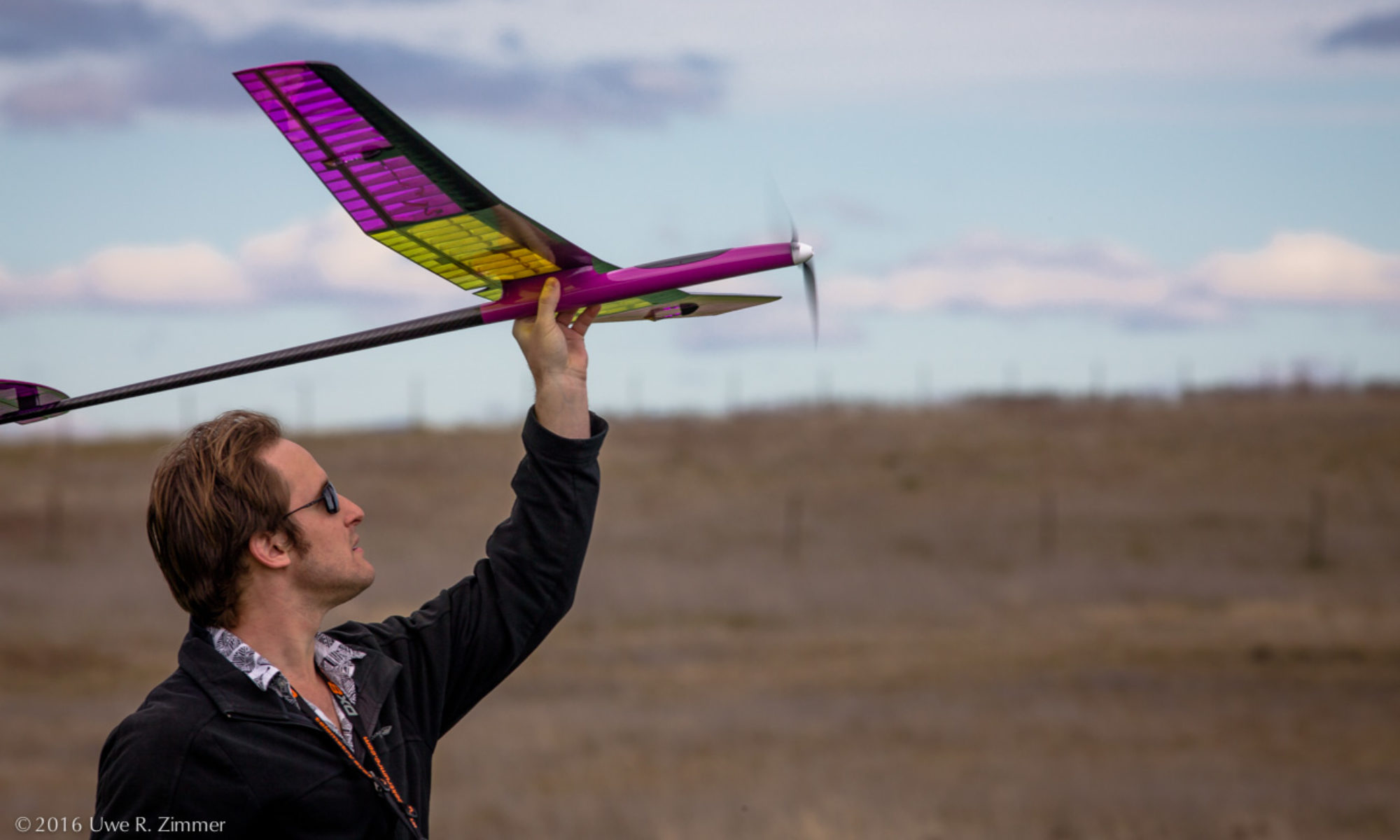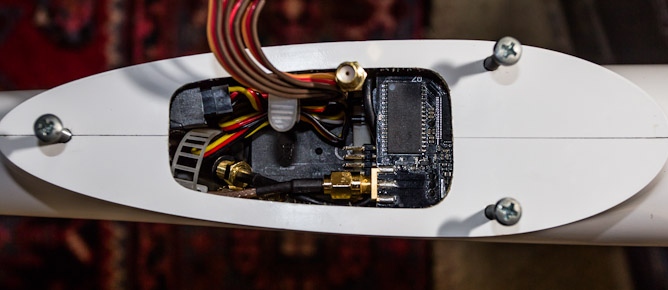So it’s been 18 days short of a year since the Pulsar arrived in a giant box. Since then there has been a lot of time spent measuring and modelling and generally designing to figure out how to fill it with stuff to ready it for the outback challenge.
It took a few attempts at various components to get the fit right. Measuring its sleek, sexy curves proved to be quite difficult. The last few days have been spent shifting things around to perfect the balance and program my recently replaced radio equipment.
So as you can see in the image, the cabin of the Pulsar is pretty cramped. On the right is the stack of avionics including Asity and the controller for the camera. In the middle is the servo that holds and releases the water bottle (under all the cables). Finally on the top left is the receiver used for manual control. Asity is now capable of controlling the aircraft, so once I’ve tested it thoroughly, that receiver will be replaced with a slave receiver and Asity will take over.
Today was the latest in a few attempts, the first since January, to get the Pulsar off the ground. I warmed up a bit by taking a the Paprika for a spin, as I haven’t actually flown anything other than a simulator for about twelve months. The wind was a bit on the strong side but wasn’t gusting too badly, so we decided to go ahead with launching the Pulsar.
The launch was a bit hairy as always but once I pushed the throttle it had no trouble climbing almost vertically. Once I had some altitude I could take a breath and find a comfortable attitude. It doesn’t handle anything like the Paprika as you would expect, so I can’t apply the throttle and do a quick backflip to escape a low altitude stall. It didn’t take much trim to get it flying level but I did leave the elevator controls linear rather than the softer exponential option. Given the elevator is so huge this would have made it much more controllable. So I spent the first flight bobbing up and down with over corrections but generally flying smoothly.
One major issue I had not considered was that the wings look identical from top to bottom. This often left me guessing which way up the aircraft was, leading to a terrifying accidental barrel roll. Given its wingspan it doesn’t flip over very quickly so my usual ‘trial and error’ approach to situational awareness doesn’t leave me with much time to make any mistakes. I’ll probably be sticking some fluro-yellow tape to the underside.
The landing was a typical repetitive stall as I continued to overcorrect with the elevator. Under full flaps, this aircraft can drift incredibly slowly which made the landing look like a slow motion crash. Luckily it actually was slow so it touched down with only a slight bump. Once I’ve sorted out the controls it should be a very nice aircraft to fly.
The Pulsar wasn’t the only plane to take it’s first flight today. My supervisor has recently built a Pilatus Porter which has also been waiting patiently to get off the ground. His son, Jan took the controls and it too had a successful maiden voyage.
The day almost went without incident. I took the Paprika for another run after the Pulsar was done. At some point during the flight, one of it’s stabilisers cracked, and was hanging limply by some balsa threads. Miraculously, or just because of my mad skillz it made it to the ground in one piece. If it didn’t have a v-tail, I don’t think the landing would have been nearly as successful.
So the Pulsar flies! My work now is to mutilate the shiny white fuselage by cutting holes for the camera and payload which I can’t say I’m looking forward to. Hopefully I can get it back up to test the bottle drop in time for my April deadline.











